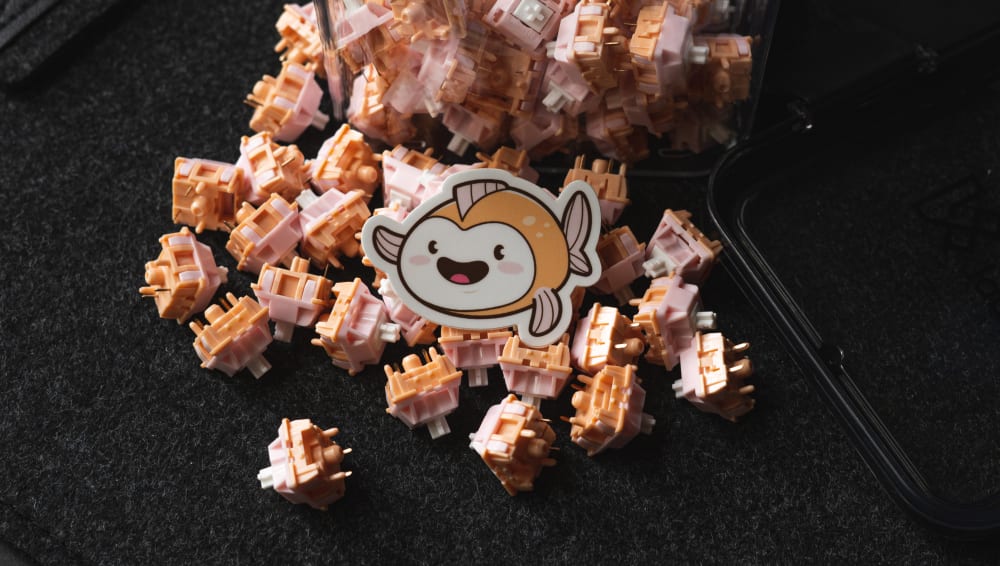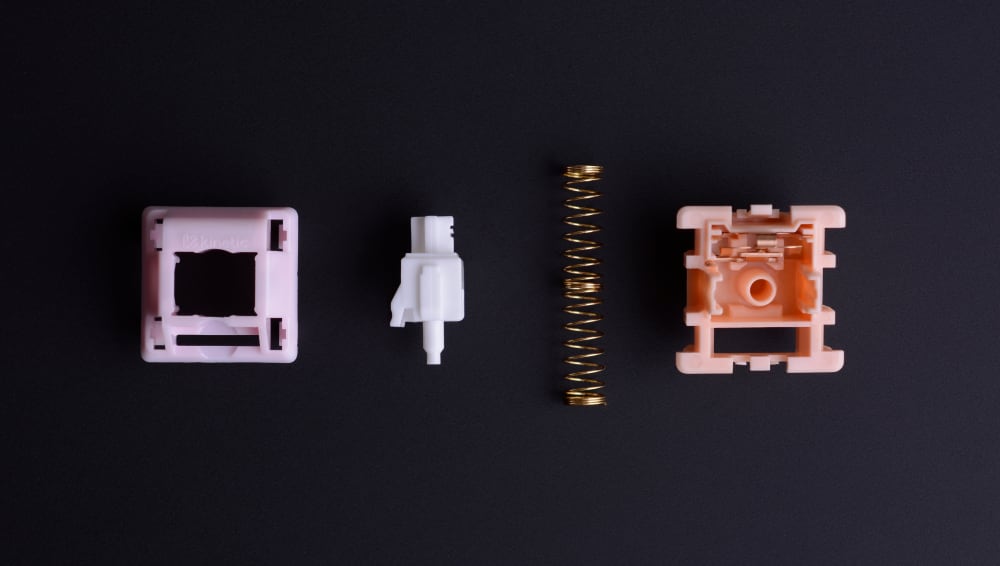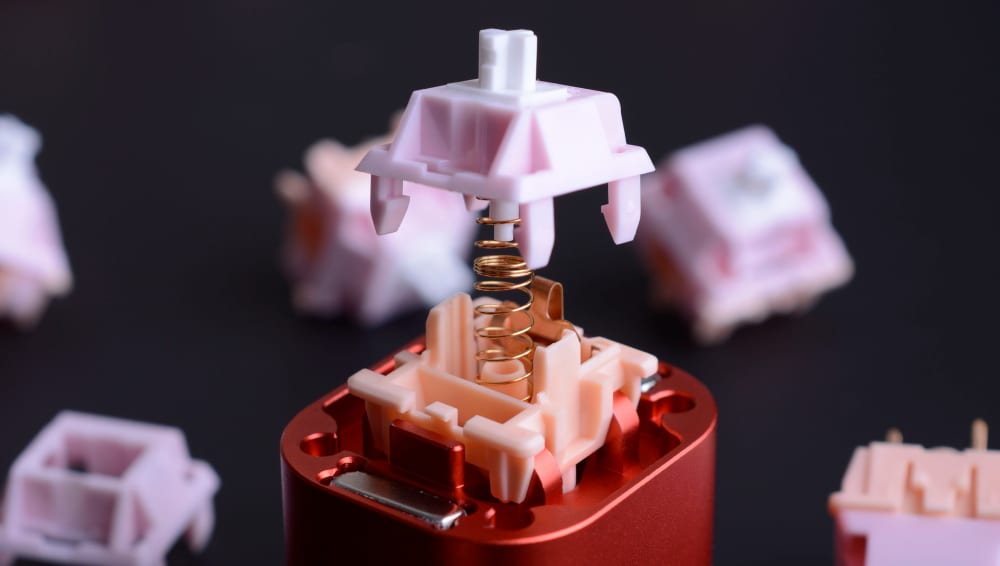Keybonbon
Jun 15, 2022
•6 minutes
Using and Modding Salmon Tactile Switches
How to use and prep your salmon tactile switches, and answering your most common questions


Salmon Tactile Switches for Mechanical Keyboards
Whether you're thinking about getting your hands on Salmon tactile switches, or you've already decided to dive in, we're going to cover some useful tips and tricks to get your tactile switches to the next level. But first, what makes these switches special?
What makes Salmon Tactile Switches Special?
Before we can answer that question, let's talk about what a tactile switch is, and more specifically, the different types of tactile switches. As we'll soon see, Salmon Tactile Switches are long-pole tactile switches with a rounded tactile bump and no minimal post-travel. They also have 63.5g Symmetric Long Springs and a unique composition of PC Polymer for the housings. That was a lot of jargon-- let's break them down:
- Long Stem Pole
- Extended stem poles have a few benefits: their long pole reduces the post travel distance after the switch actuates. In other words, after the keyboard registers a pressed key you'll bottom-out (aka completely press) the switch at approximately the same time. Also, long stem poles are known to produce a louder (think Holy Pandas).
- Rounded Tactile Bump
- In addition to having a long stem pole, salmon tactile switches have a rounded bump, meaning the tactility starts early (right at the top of the key press) and lasts through the remainder of the press (once again similar to Holy Pandas).
- Symmetric Long Springs
- These extra long gold-plated stainless steel springs ensure the up-stroke (aka the force emitted against your finger after pressing the switch) will be extra bouncy, resulting in a switch that feels snappy and responsive. The 63.5g weight was chosen as the perfect middle ground between a light and heavy switch.


Salmon Tactile Switch Parts
In short, salmon switches are special because their tactility and material composition deliver a switch that is comfortable to type on while producing a thocky, deep sound signature, as we'll see later on with some community sound tests. In addition, the Symmetric Long springs ensure a snappy typing experience.
Modding your Salmon Switches
Straight from the factory, salmon tactile switches already have a light layer of factory oil, and their housings are tightly closed. This ultimately means that lubing salmon switches is optional, as is applying switch films.
With that said, it would be hard to find a switch that does not benefit from an even, light layer of switch lube. Salmon switches are no exception-- we recommend using a light lubricant, such as Carbon™ GS1 switch lube or the slightly thicker Tribosys 3203 switch lube to elevate the Salmon's sound signature. If you decide to film salmons, the HTV + PC films from Kelowna are a great choice, but any brand of switch films will do the trick.


Salmon Tactile Switch Opened
To mod your salmon switches, follow the steps below:
- Open your switch with a switch opener (such as the 2-in-1 switch opener by Kelowna)
- Get your switch lube and lube brush ready
- Lightly coat your lube brush with lubricant and apply a small, even layer to the bottom housing, spring, stem (but avoid the stem legs, you won't want to lose tactility on this switch). Optionally, you can lube the top housing as well for extra dampening.
- If you decide on filming salmons, position the switch film on the bottom housing before closing the switch.
It's important to note that Salmon tactile switches are 5-pin switches, so out of the box they're only compatible with PCBs that support 5 pins. If your PCB only supports 3-pin switches, you can easily clip off the extra 2 plastic pins on the bottom of the switch using a nail clipper.
That's it! Your salmon switches are ready to use. Check out the sound test below to get an idea of what your Salmon switches will sound like:
Alexotos Sound Test
Clack Labs Sound Test
Chaite Sound Test
What do you think of your Salmon Tactile Switches? Let us know!